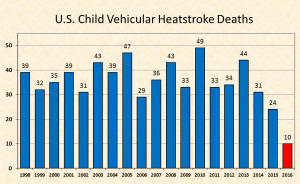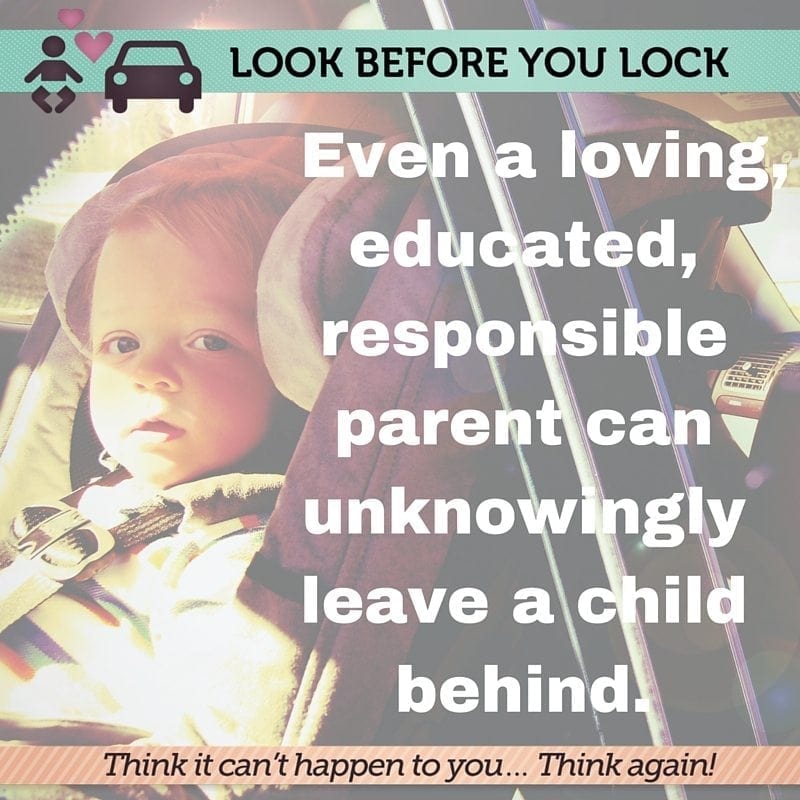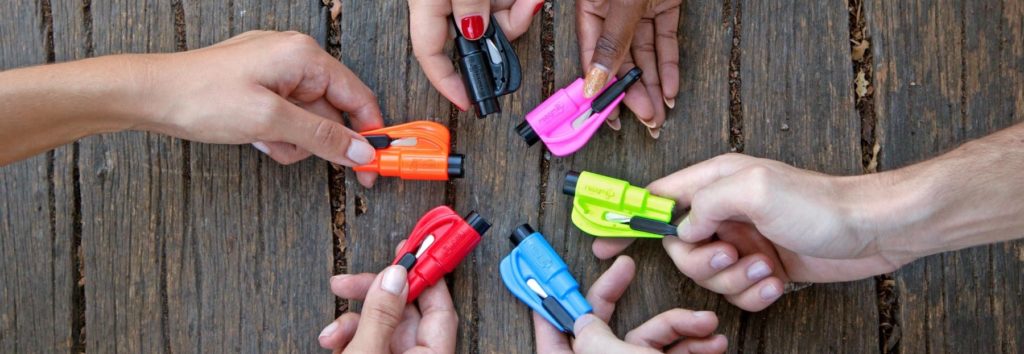On average once every nine days a young child dies due to heatstroke in a vehicle. As part of National Child Vehicular Heatstroke Prevention and Awareness Day, we remember these children and try to educate other families on the dangers of leaving a child in a car alone.

Stress, new parenthood and schedule changes can equal forgetfulness
Unfortunately, due to stress, changes in a schedule or distractions, we hear stories where a parent or caregiver has unknowingly left a child alone in a vehicle. Sadly, we also hear of many stories where the parent intentionally left the child in the car for a few minutes while running errands. Sometimes a parent driving on “autopilot” can actually lock and leave their car, forgetting the sleeping baby or toddler in the back seat. If it seems unbelievable, it is actually a that cycle continues year after year as the auto industry refuses to add simple, existing driver-reminder technology to their vehicles, and refusing to test new lifesaving options.
“The worst thing any parent or caregiver can do is think that this could never happen to them or that they are not capable of unknowingly leaving their child behind,” says Janette Fennell, founder and president of KidsAndCars.org, the leading national nonprofit child safety organization working solely to prevent injuries and deaths of children in and around motor vehicles. “This can and does happen to the most loving, responsible and attentive parents; no one is immune,” Fennell said.

Vehicular heatstroke – there is no safe temperature to leave a child inside a car alone
Summer approaches and already nine children have died from vehicle related heatstroke. That’s a 225% increase compared to last year at the same time. Since 1990, more than 750 children have died in such preventable tragedies. An average of 37 children die every year from vehicular heatstroke. Numerous states have enacted “Good Samaritan” laws protecting people who break a window to save a child locked inside, on the verge of heatstroke.
“We encourage individuals in all communities to take action if you see a child alone in a vehicle,” stressed Amber Andreasen, director of KidsAndCars.org. “Try to find the driver of the vehicle, call 911 and if the child seems to be in imminent danger, break the window furthest away from the child to rescue them.”
Carry your resqme keychain and be a ‘Good Samaritan’
You can use the resqme tool to break the window farthest away from the child. The spring-loaded device is tapped on the corner of a car window and the glass is shattered.
Look before you lock
One tip experts give is to leave a purse or cell phone in the backseat, forcing you to check the backseat before exiting and locking the car. Through KidsandCars’ “Look Before You Lock” educational campaign, they’ve distributed at least 750,000 safety information cards to birthing hospitals and new parents. This education campaign will continue, but at the same time technology is needed to prevent these tragedies.
For additional information, statistics and charts specific to child vehicular heat stroke visit http://www.kidsandcars.org/heatstroke-day.html and to purchase a resqme and donate to KidsAndCars, click the picture below:

Visit http://noheatstroke.org to find out more facts and stats about vehicular heatstroke and share with parents and community members.

